How To Identify The Most Common Florida Weeds
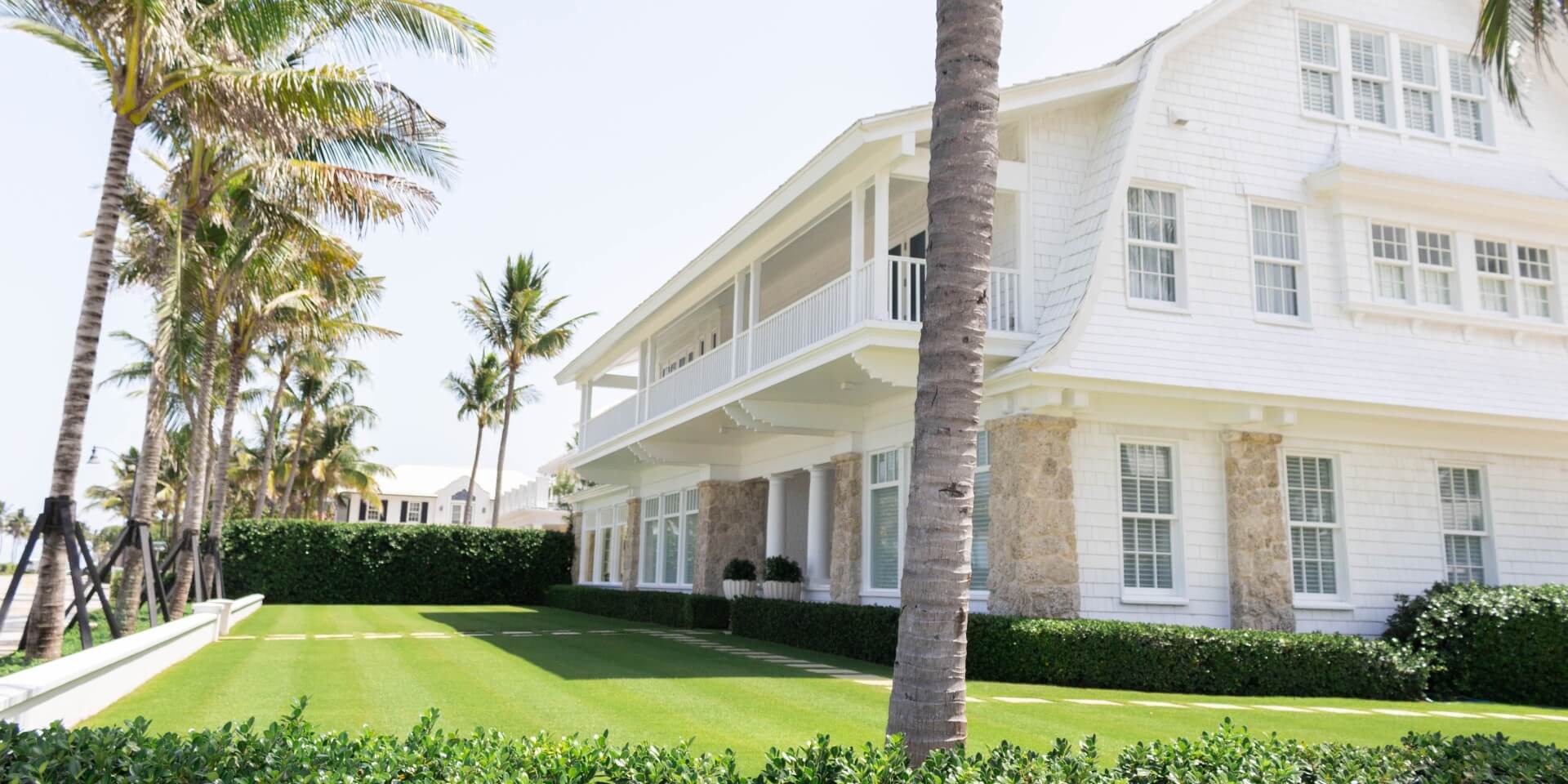
Prevent Weeds From Damaging Your Florida Lawn
Your lawn is an essential component of your home. It is the first thing visitors see when they arrive, and it provides a safe, beautiful place for your family to create lasting memories.
No matter how careful you are with your lawn care routine, weeds inevitably pop up across your coveted turfgrass.
Lawn weeds are easily one of the most common Central Florida landscape issues. Not only are weeds unsightly, but they are also dangerous to the health of your lawn.
If left untreated, weeds will take over your yard and kill your grass. If treated improperly, you could make the issue worse or even kill your lawn or plants you didn’t want to remove.
Here are the twelve most common weeds in Florida and what you need to know to get rid of them now.
Professional Lawn Care
Avoid the hassle of lawn care. Let our experienced team of lawn care specialists help make your home look amazing! Call our team today at 407-854-8580
Identifying The 12 Most Common Weeds In Central Florida
The first step in weed control is knowing what you are dealing with. It’s essential to correctly identify the lawn weeds so that you can find the most effective treatment.
Here are some standard terms you will see in this guide and what they mean.
- Annual Weed: Weeds with a life cycle that takes place within a single year.
- Perennial Weed: Weeds that can reproduce by seeds and vegetative parts year after year.
- Pre-Emergence Herbicide: Kills weeds before they sprout.
- Post-Emergence Herbicide: Kills actively growing weeds.
- Non-Selective Herbicides: Kills any plant on contact
Now, let’s look at the more common weeds in Central Florida and how you can quickly identify them.
| Weed Name | Appearance | Annual Or Perennial? |
| Broadleaf Plantain |
|
Perennial |
| Bull Thistle |
|
Annual Or Biennial |
| Virginia Buttonweed |
|
Warm Season Perennial |
| Common Chickweed |
|
Winter Annual |
| White Clover |
|
Perennial |
| Crabgrass |
|
Annual |
| Dandelion |
|
Perennial |
| Dollarweed/
Pennywort |
|
Warm Season Perennial |
| Florida Beggarweed |
|
Spring Perennial |
| Goosegrass |
|
Summer Annual |
| Yellow Nutsedge |
|
Perennial |
Professional Lawn Care Done Right!
You work hard to keep your home looking great- why not do the same for your lawn with our professional lawn care services? Call our team today at 407-854-8580
Broadleaf Plantain (Plantago Major)
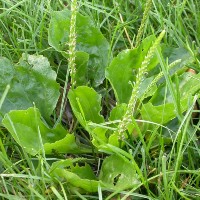
This broadleaf lawn weed has a fibrous root system and grows with a rosette habit. The leaves are long and broad, growing up to six inches in length and four inches wide.
Young leaves are egg-shaped with 3-5 prominent veins and a light green color that darkens with a reddish color towards the base as the weed matures.
These broadleaf weeds aren’t picky where it lays its roots- you can also find it in sidewalk cracks along the road.
| Annual Or Perennial? | Growing Conditions | How To Remove |
| Perennial | Dry or Wet Soil, any nutrient level |
|
Bull Thistle (Cirsium vulgare)
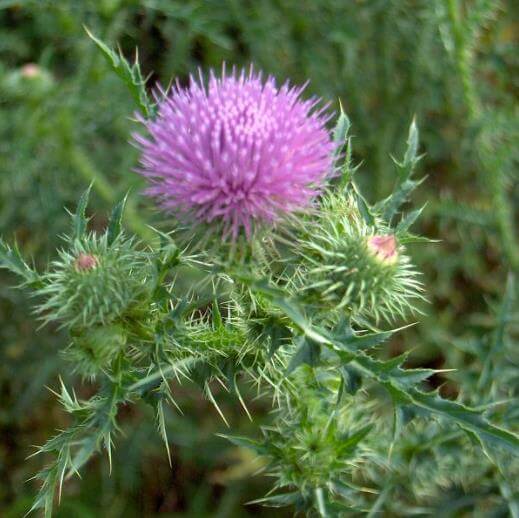
Bull Thistle is highly invasive. It begins the life cycle as a spiny-leaved rosette. The prickly leaves develop hairy stems over winter and branch up to 2 weeks by early spring with a scented flower in the summer.
Bull thistle forms a deep taproot- making manual pulling a big challenge. This free seeding weed forms dense thickets that displace surrounding vegetation.
Spawning around 5,000 seeds a season, the bur-like seed heads cling to pant legs, machinery, and animals, leading to an uncontrollable spread.
| Annual Or Perennial? | Growing Conditions | How To Remove |
| Annual Or Biennial | Disturbed Soils, Pastures |
|
Virginia Buttonweed (Diodia virginiana)
Buttonweed is one of the most common weeds that invade lawns in the southern part of the United States. It begins its growing cycle in spring and continues throughout the summer. By fall, the matted growth from buttonweed will crowd out and kill lawn grass.
It can be identified by its oppositely arranged leaves, which are connected by a membrane across the stem area with bristly stipules.
The green leaves are stemless and grow up to 2.5 inches long. You can identify buttonweed by the white, hairy, star-shaped flowers with four petals in the summer.
Buttonweed spreads through seeds and an underground root system called rhizomes, making it a vigorous grower that tolerates mowing and is resistant to hand-pulling.
| Annual Or Perennial? | Growing Conditions | How To Remove |
| Warm-Season Perennial | Abundantly Moist Soil With Nutrient Deficiencies | Repeated Post-Emergent Herbicide Treatments |
Common Chickweed (Stellaria media)
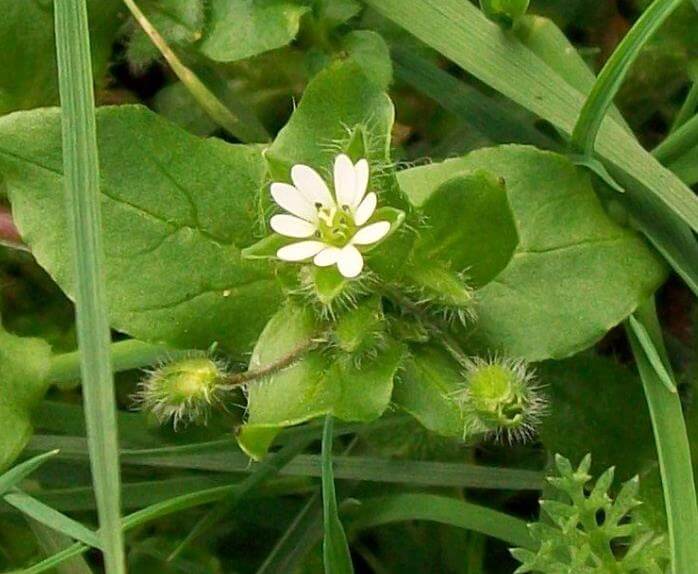
Even though this common weed is edible, few homeowners want to see Chickweed spring up on their lawns.
Common Chickweed is a broadleaf weed that forms a small mound on your turf. With long, egg-shaped leaves that end in points, it flowers with small, elongated, daisy-like white flowers.
Chickweed is incredibly difficult to eliminate because it is very adaptable and competitive. It tolerates lawn mower wear and tear, as well as drought conditions.
| Annual Or Perennial? | Growing Conditions | How To Remove |
| Winter Annual | Cool, Wet Weather
Low-Height Lawns |
|
White Clover (Trifolium repens)
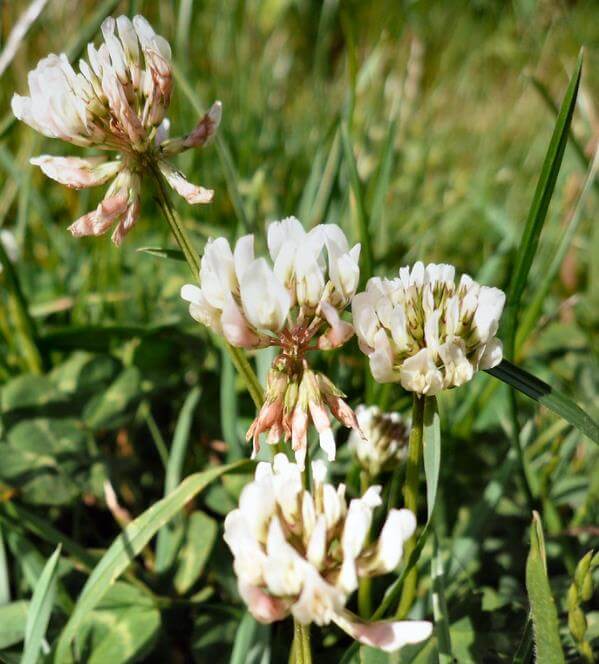
White clover is a somewhat controversial weed: some homeowners love how white clovers add nitrogen to the soil that will grow edible plants. But if you aren’t overwintering your vegetable garden, white clover can be a headache when it spreads across your lawn.
Growing in a creeping pattern, low to the ground, white clover will germinate quickly in various places, incredibly sparse lawns with weak grass competition.
A broadleaf weed, white clover, is easily identifiable by the telltale “lucky clover” three-leaf pattern. Its blooms grow in spherical clusters that look like small balls of white petals.
| Annual Or Perennial? | Growing Conditions | How To Remove |
| Perennial | Sparse Lawns With Low Nitrogen Soil |
|
Crabgrass (Digitaria)

Much like its ocean-dwelling namesake, crabgrass has many tough stems and sits low to the ground. Because it has a procumbent growth habit, it’s very successful at creeping across your Florida lawn.
The crabgrass you encounter on your turf is most likely the smooth variety. When mature, crabgrass leaves mature up to five inches long. The leaf blades taper to a point. It emerges in early summer and can withstand hot weather thanks to its drought-tolerant nature.
Your crabgrass problem will continue year after year if you don’t take effective action. Even though it’s an annual plant, its only mission is seed production.
| Annual Or Perennial? | Growing Conditions | How To Remove |
| Annual Weed | Hot, Humid Weather, Extremely Tolerant |
|
Dandelion (Taraxacum officinale)

You may have fond childhood memories of watching the yellow flowers of the dandelion plant turn into cloud-like spheres before you made a wish and blew the seeds into the air. But as an adult homeowner, you’ve probably tired of dandelions springing up on your lawn.
This aggressive grower has jagged-edged leaves that can grow up to ten inches in length. From the anchoring, taproot grows bright yellow flowers that sit atop hollowed stems. Their change to the white “puffball” is usually triggered by shortened daylight hours or frost.
Regular lawn maintenance can help prevent these widespread lawn weeds, though they are difficult to remove without professional help.
| Annual Or Perennial? | Growing Conditions | How To Remove |
| Perennial | Acidic Soil |
|
Dollarweed/Pennywort (Hydrocotyle spp.)
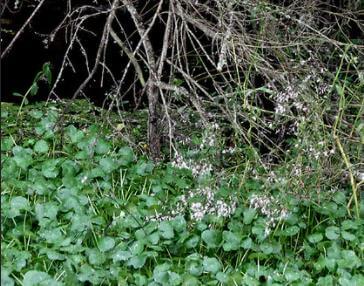
Dollarweed, also known as pennywort, gets its name from the silver-dollar-shaped leaves that make up this lawn weed.
These leaves are bright green, round, and resemble small lily pads with scalloped edges up to two inches in diameter.
Dollarweed notoriously loves water: it can even float in flooding conditions. If you have dollarweed on your lawn, it means you’re dealing with excessive moisture in your area.
| Annual Or Perennial? | Growing Conditions | How To Remove |
| Warm-Season Perennial | Excessive Moisture |
|
Professional Lawn Care Done Right!
You work hard to keep your home looking great- why not do the same for your lawn with our professional lawn care services? Call our team today at 407-854-8580
Florida Beggarweed (Desmodium tortuosum)
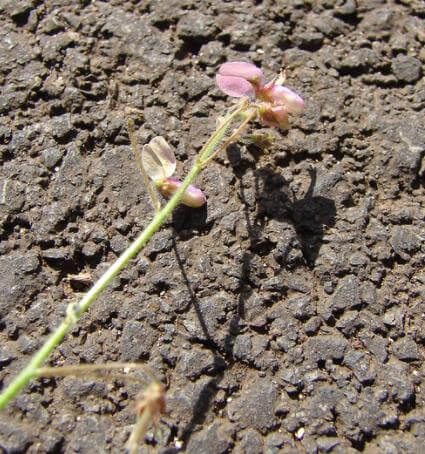
Also known as creeping beggarweed, Florida beggarweed is a massive problem on the lawns of Florida and Texas.
It grows low to the ground and is easily identified by its three leaflets attached to one main stem. The lawn weed’s flowers are small, ranging from rose-colored to purple-hued. Beggarweed growth stands out from your lawn because it creates a mat-like effect.
Florida Beggarweed is incredibly difficult to remove. It is resistant to hand-pulling, and most herbicides do minor damage.
| Annual Or Perennial? | Growing Conditions | How To Remove |
| Spring Perennial | Nutrient-Deficient Soils |
|
Goosegrass (Eleusine indica)

If you recently took care of a crabgrass issue, you need to keep your eyes peeled for troublesome goosegrass. Despite its whimsical name, this weed is a severe issue for your lawn.
Goosegrass is rather unsightly. It has a coarse, bunched-up appearance and can grow up to twelve inches long. The leaves are hairy near the base and can appear folded or flat.
Goosegrass flowers bloom in mid-summer. They hold two to ten finger-like spikes that look like a zipper. It enjoys exposed high-traffic areas.
| Annual Or Perennial? | Growing Conditions | How To Remove |
| Summer Annual | Poorly Draining, Compacted Soils |
|
Yellow Nutsedge (Cyperus esculentus)
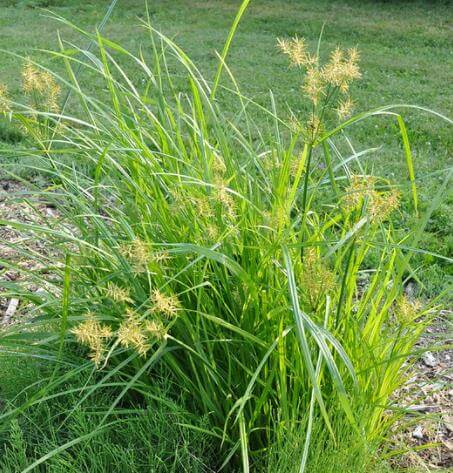
Although common in Central Florida, this weed can be tricky to identify.
Yellow nutsedge is also called nutgrass, even though it is a sedge, not grass. Its leaves are yellow-green and have a grass-like appearance. The seed head is spiky and yellow. What sets yellow nutsedge apart from grass is its V-shaped stem.
This weed is tough to control because its tubers can grow between eight and fourteen inches deep into the soil, making it nearly impossible for homeowners to remove on their own.
| Annual Or Perennial? | Growing Conditions | How To Remove |
| Perennial | Overly Irrigated Lawns, Full Sun |
|
Trust LawnWorks With All Your Weed Control Needs
With over 20 years of lawn care, weed control, and pest control services, LawnWorx knows what it takes to keep your Florida lawn beautiful and healthy.
Once you know what kind of weeds you are dealing with, contact the professionals at LawnWorx for a free estimate.
Our Orlando Office
285 E Oak Ridge Rd.
Orlando, FL 32809
Hours: M-F 8A – 5P
Phone: (407) 854-8580
 407-854-8580
407-854-8580

